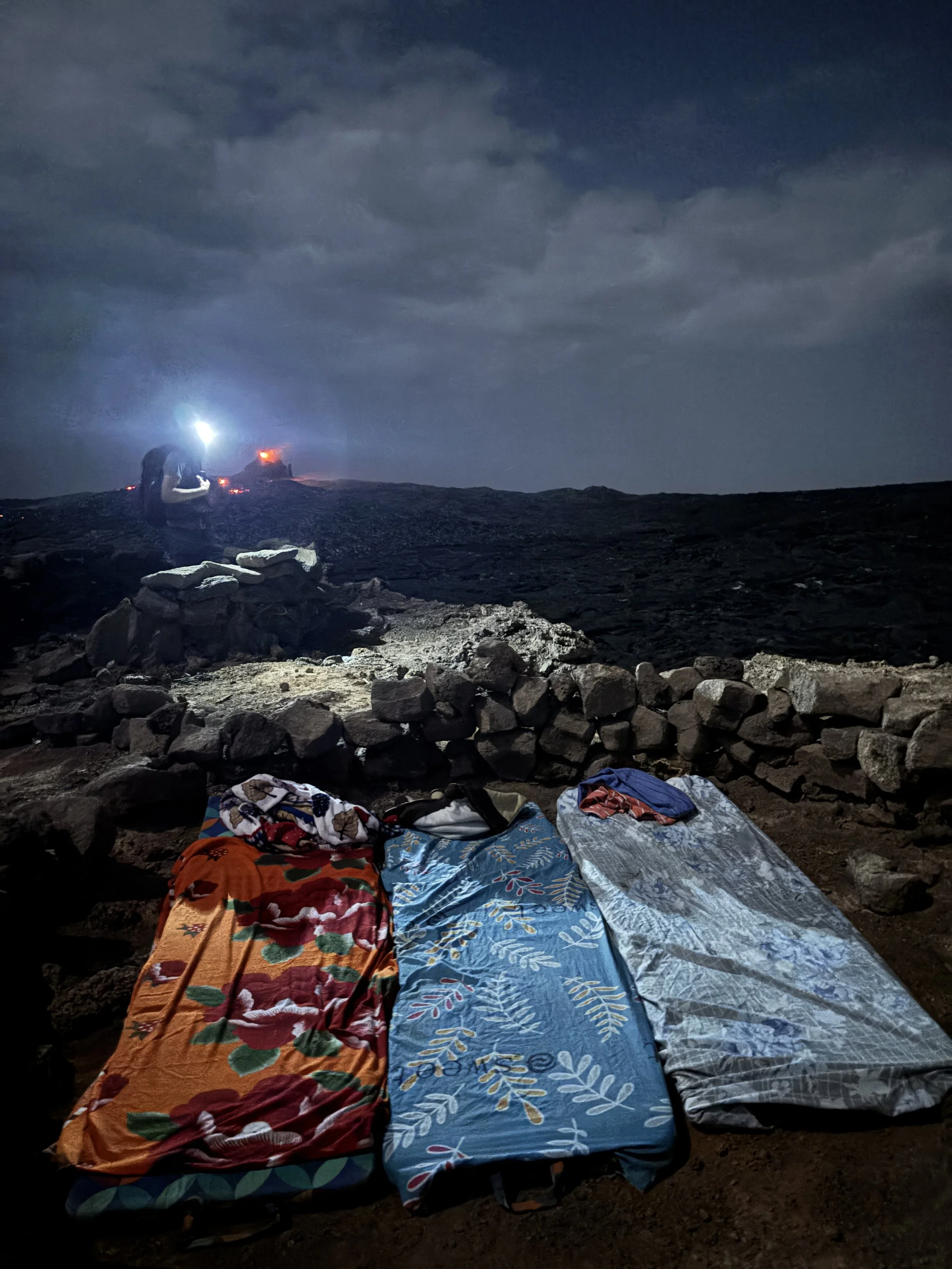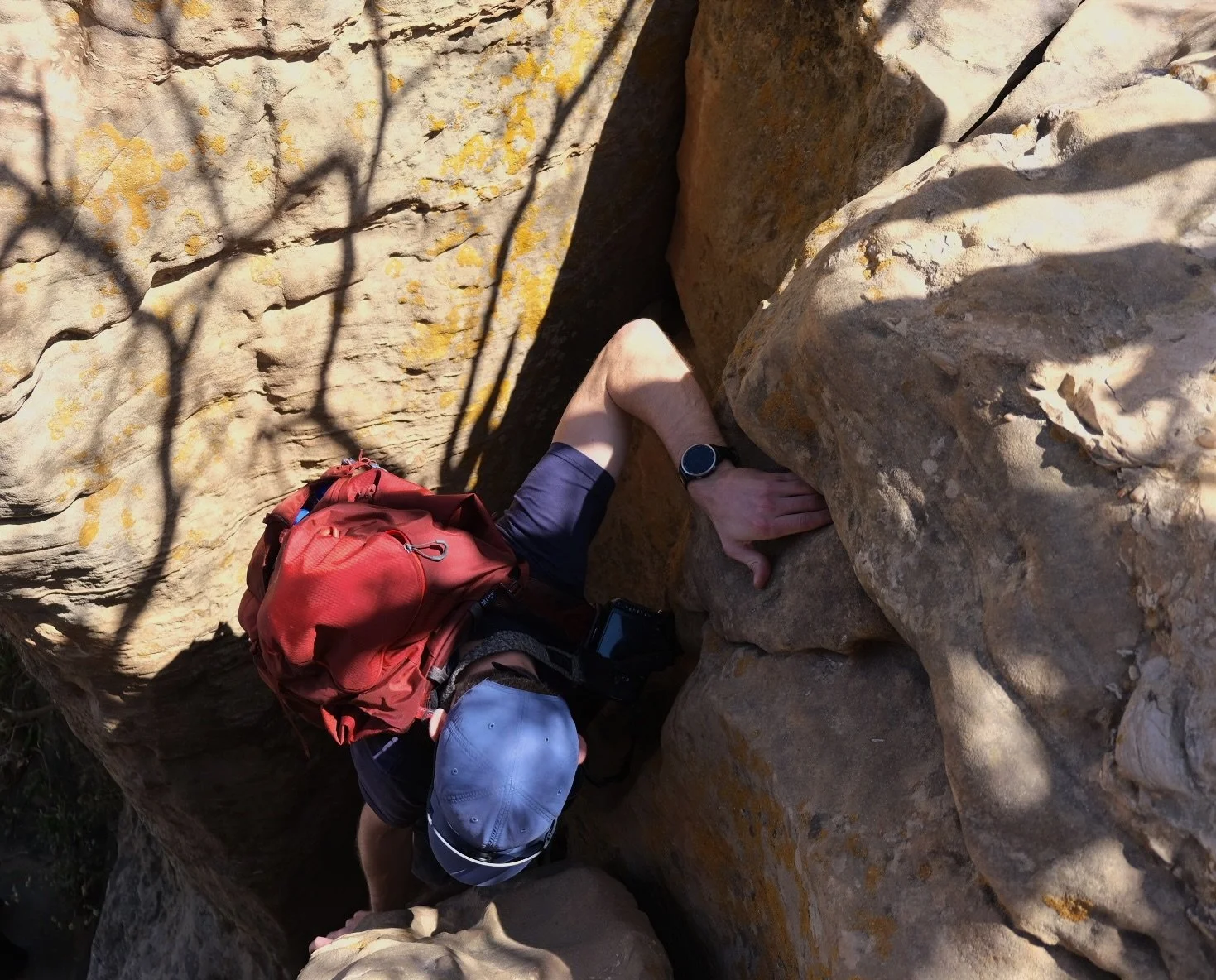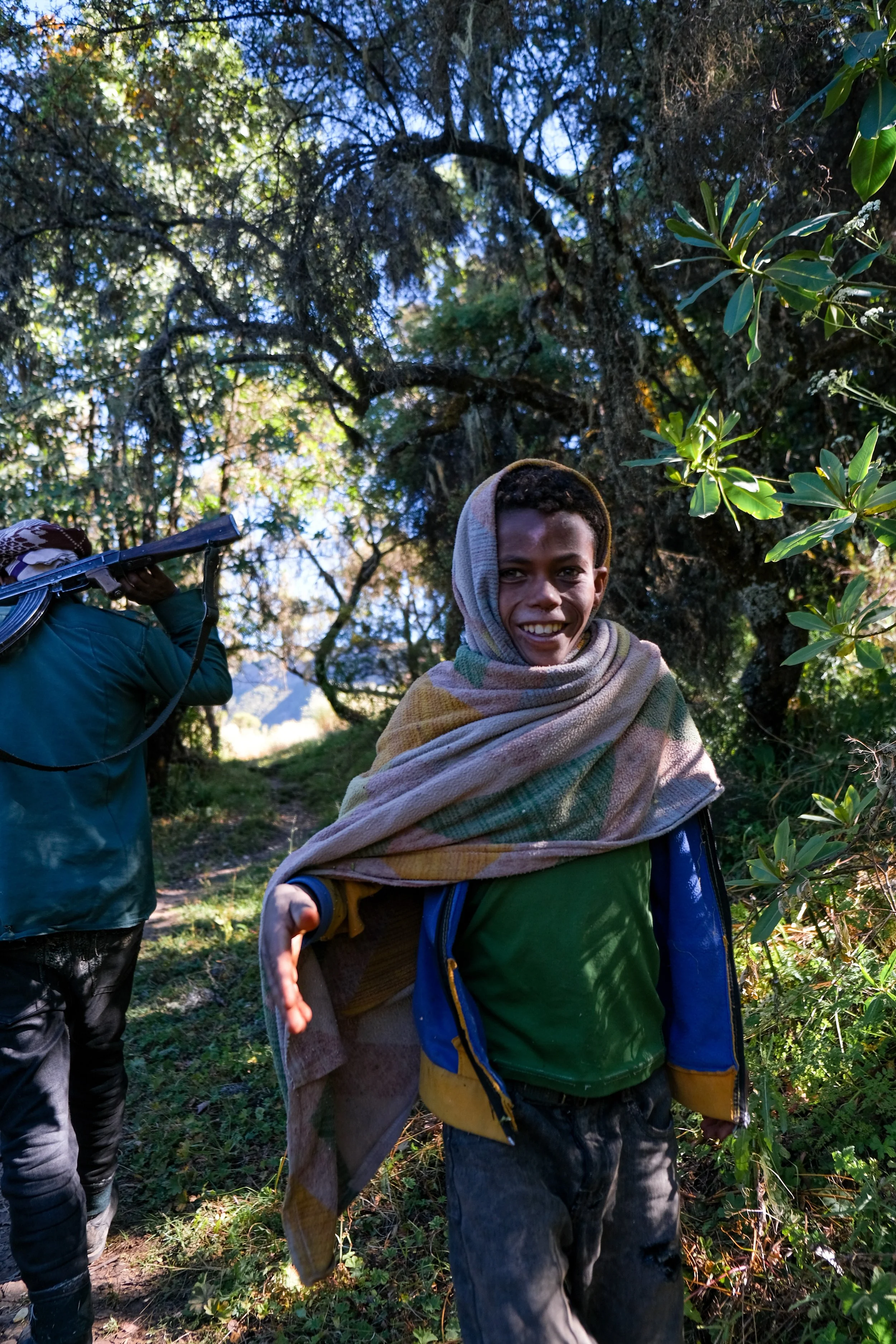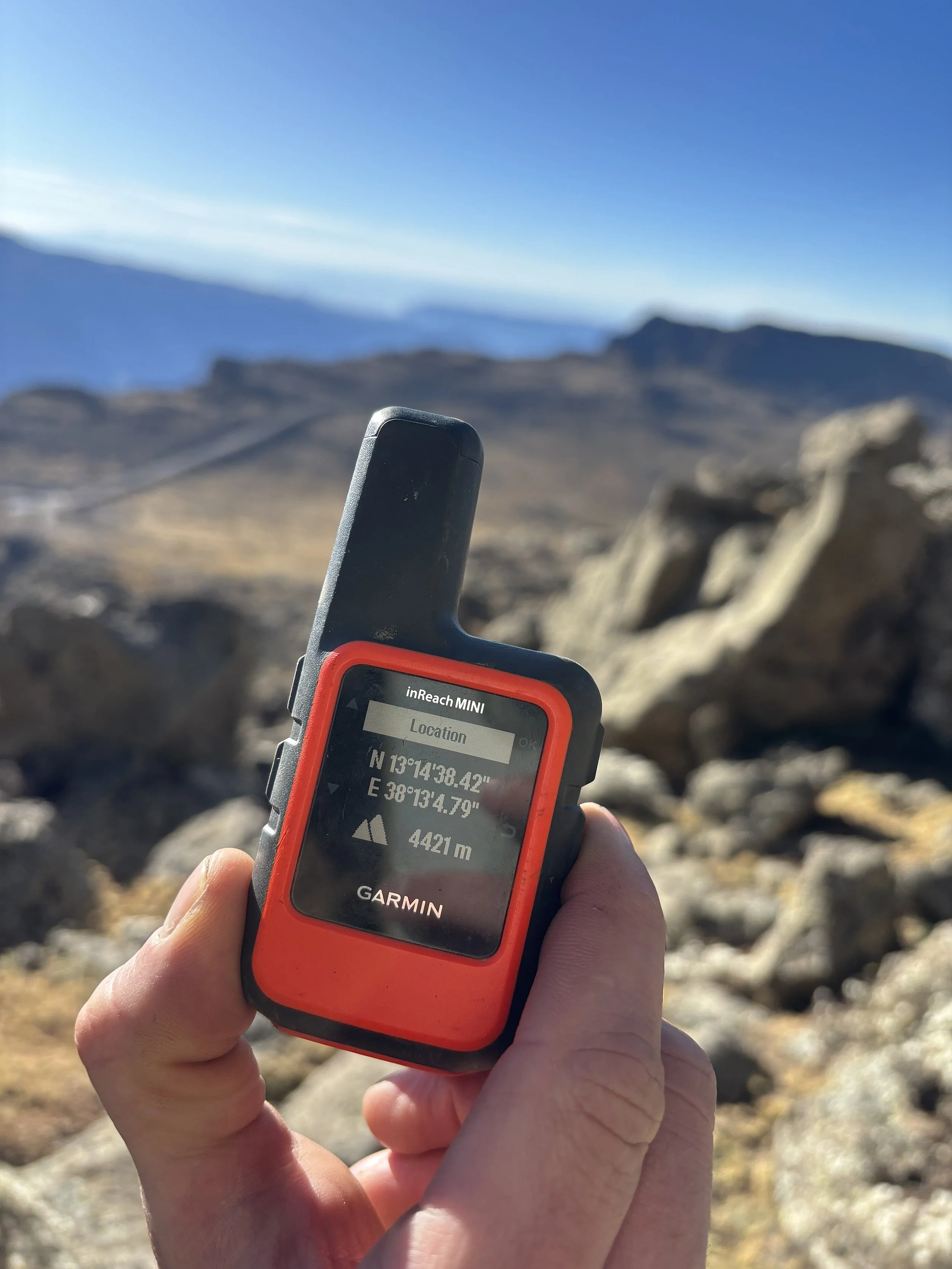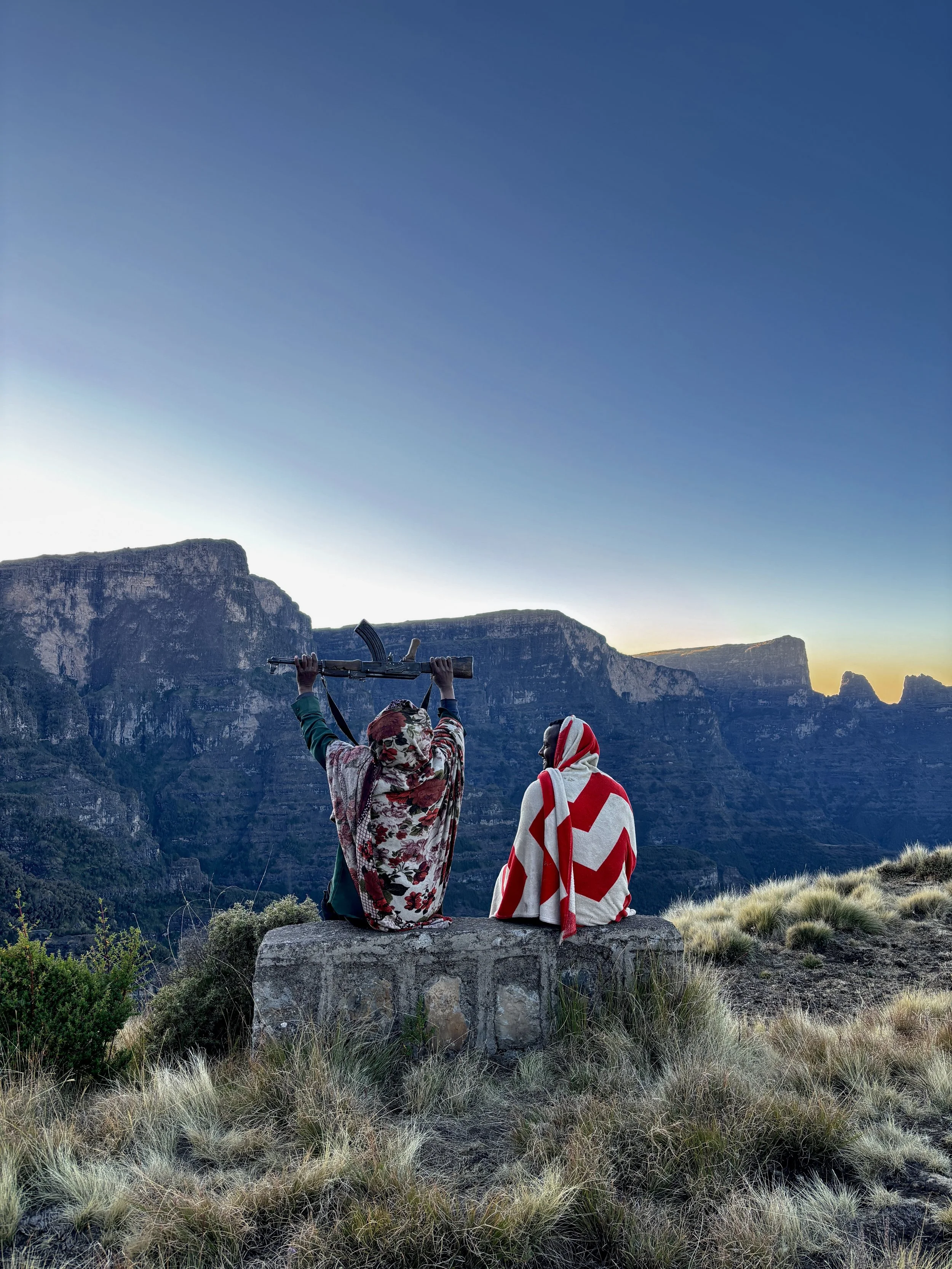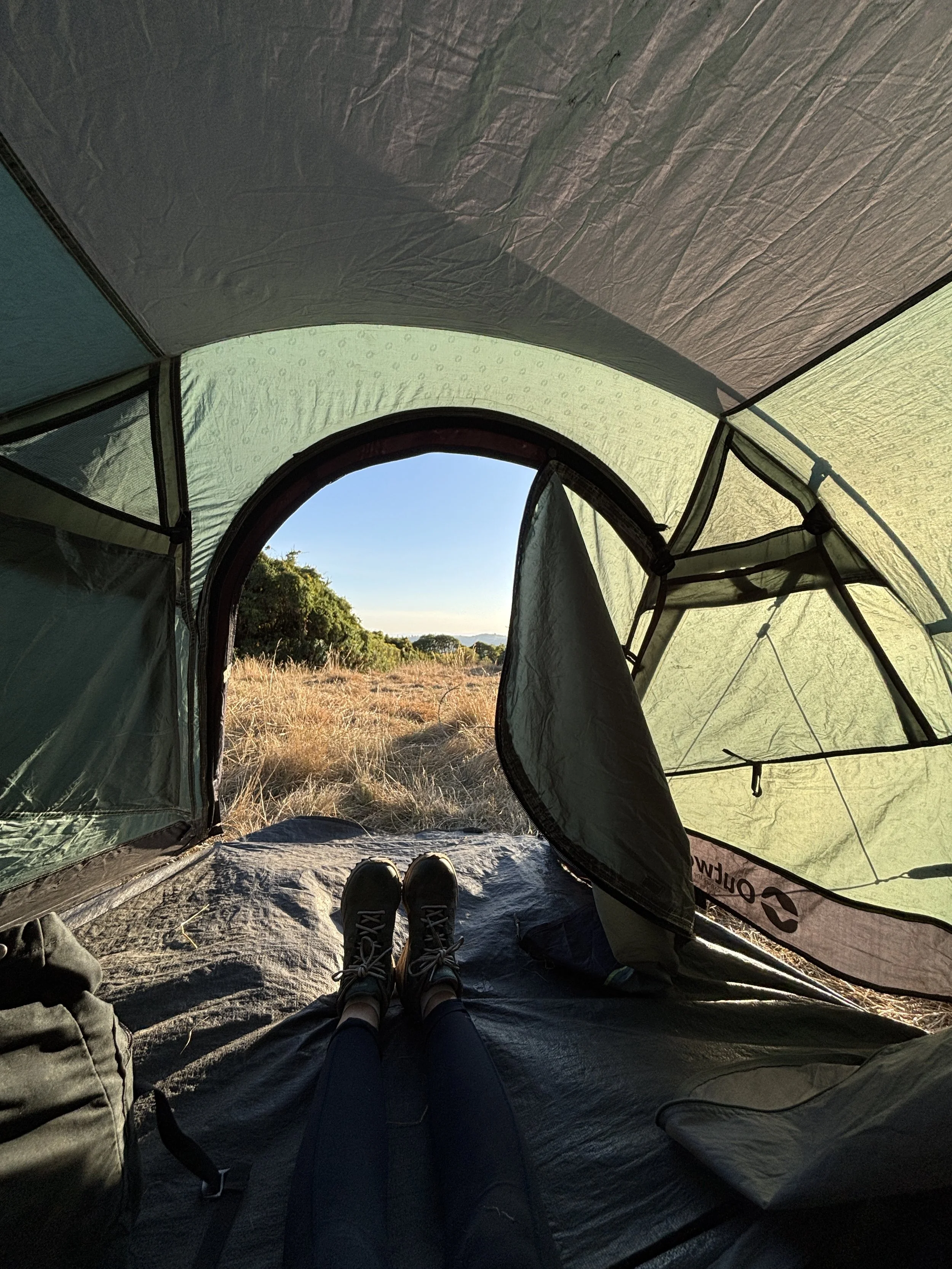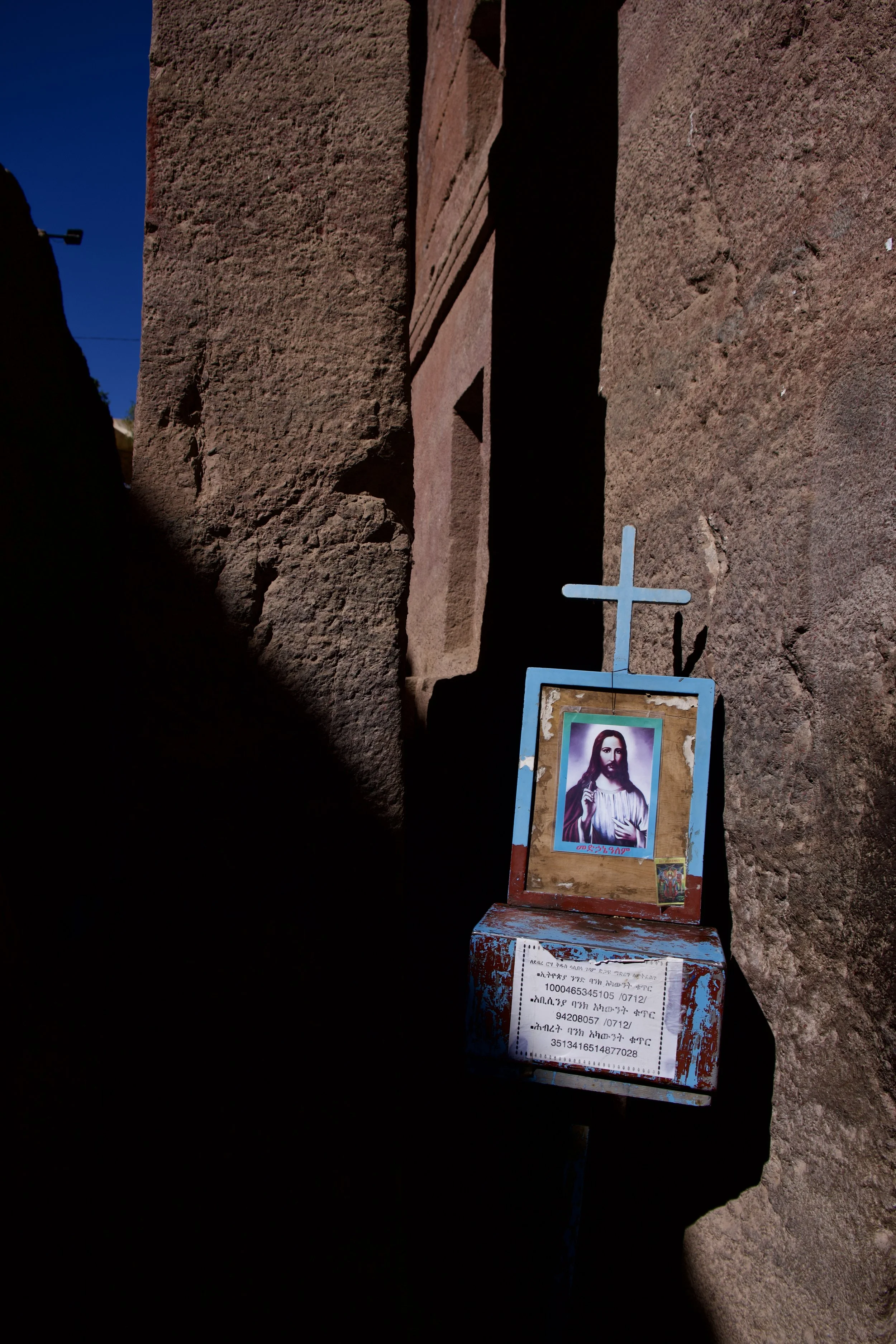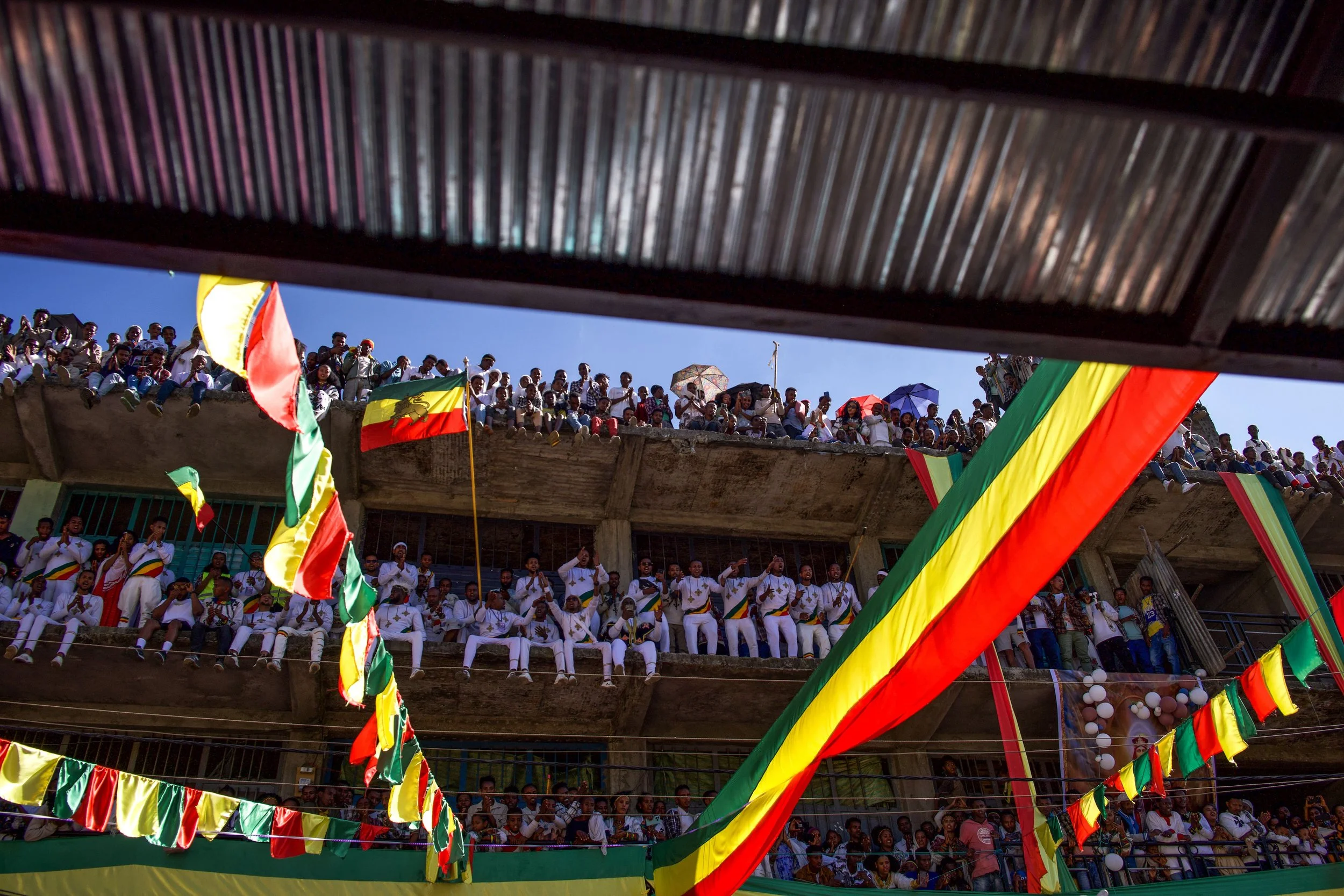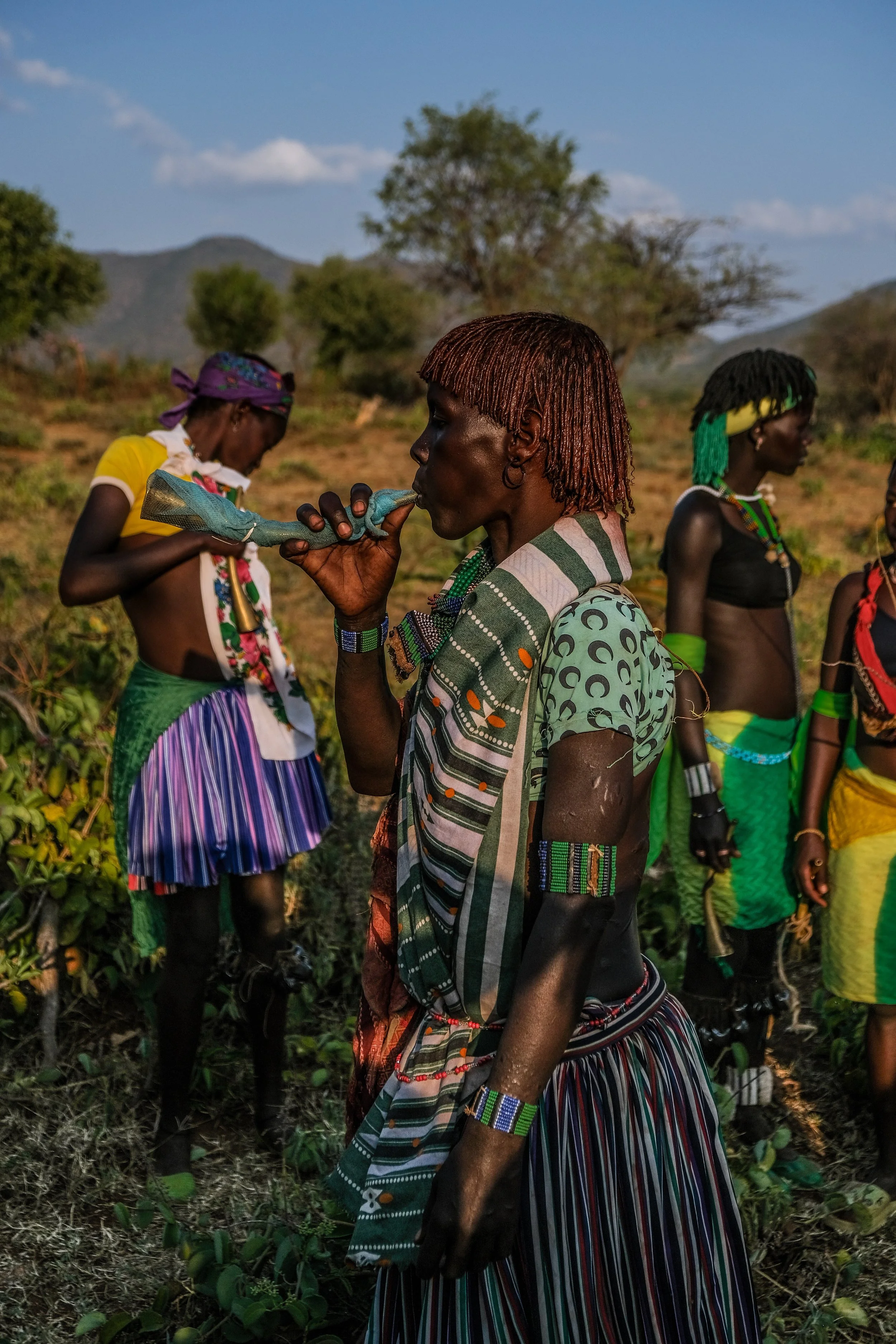
A Month in Ethiopia.
Some notes on a country never colonized.
A brief disclaimer:
“Travel writing” intimidates me. There’s an implicit danger in generating work about places I know relatively little about, places I’m not from. I’m grateful for the experience of travel, yet often uncomfortable with what it produces: a lasting impact on host communities, the environment, our egos.
I also find the narrative switch — from describing necessary geographic, social, and political context to a personal-essay-esque this is how it made me feel reflection — inherently awkward, and self-serving. But isn’t all writing a little self-serving?
Even so, context and reflection matters, especially when photographs involve people and places shaped by political or environmental pressure. The images I took in Ethiopia deserve that kind of attention, so I’m offering a little bit of it, sheepishly, here:
By the time I reached the base of Erta Ale, an active volcano whose name means “smoking mountain,” it was close to two in the morning. Strapping on my headlamp, I listened to the low, guttural spluttering of lava, thinking about how twenty-four hours earlier I’d been sitting under fluorescent office lights in Washington, D.C.
The hike up took about an hour. Near the top by a flat ridge, we dropped our mattresses, and then, to my surprise, Arre motioned for us to continue down into the volcano’s caldera — which, looking back, wasn’t smartest thing I’ve ever done. Reluctantly, I followed him, watching as he tapped freshly cooled lava with a stick before taking a step forward. It’s crusted surface was black, thin, and deceptive, as if made of charred eggshells, or meringue. Every so often one of us would fall through with one foot and a sharp crack — we’d pause, catch our breath, and redirect.
The closer we got to the mouth of the volcano, the hotter it became. The air grew thick with moisture, feeling (and sounding) way it does in a sauna when you pour water onto the rocks. The eruptions produced a deafening ‘psh-psh’ sound — the sound of molten rock meeting air.
Hours later, from behind a little barrier made from coconut-sized stones, I watched Etra Ale’s mini eruptions from my mattress. By morning, a thin layer of soot covered everything in sight, my face included.
Erta Ale, Afar Region
Our mattresses on Etra Ale.
Our trusty Toyota land cruiser.
The morning prior, I’d flown to Addis Ababa, where I reunited with my brother Max, and Tom, our father. Together we flew up north to Tigray, a region still recovering from one of Africa’s most devastating modern conflicts. Between 2020 and 2022, the Tigray War pitted regional forces against the Ethiopian government, leaving more than 600,000 people dead and displacing millions. Traveling by road in this region remains dangerous, so the only reliable way north is by air.
In Tigray, we met Arre, an easygoing yet savvy local guide of thirty-four. His weathered land cruiser carried us nearly ten hours across some of the harshest roads I’ve experienced in Africa: ones made of sharp rock and sand, turning every mile into a test of patience. Through the car window, the breeze was noticeably metallic, as if filtered through dust and heat.
After an eventful first night, we were eager for what lay ahead, and optimistic that our second night would afford us a chance to catch up on our sleep. Instead, after spending the afternoon getting caught (and very lost) in an extremely rare desert rain storm, we fell asleep in hammocks on a chicken farm, beneath an open sky. We had ended up somewhere at the edge of the Danakil Depression, one of the hottest and lowest places on Earth, at the center of three diverging tectonic plates.


Danakil Depression, Northeast.
The scenery in Danakil looked as tortured and inhospitable in real life as it does on camera: acidic pools of green and yellow, cracked salt plains stretched into sharp geometry. Standing there, it was impossible not to think of Mars, or how easily this part of Earth could pass for something extraterrestrial.
The following week, we arrived in Hawzen, a place far higher in elevation, and home to some of the world’s highest monolithic churches. These structures sit high above the valley, carved into the cliffs, so that worshippers can be, as the priests say, “closer to God.” The climb up to Abuna Yemata Guh, the highest church in Hawzen, takes several hours, and for any climbing enthusiast, it is a thoroughly enjoyable experience. Near the top, we were instructed to take off our shoes, something that brought back memories of old climbing trips, when half the day was spent hiking, and shoe switching, just to reach the crag.
When you reach the top of Abuna Yemata Guh, which translates to “Chapel in the Sky,” a priest, Atsbeha Asefa Hagos, can be found. Each day, he climbs up and down the 250 meter cliff face with no problem, sometimes coming down just for lunch, but normally spending his entire day inside a shallow cave carved into the mountain. Here he holds services and sermons; villagers climb up to worship, pray, or get baptized.
Hawzen, Tigray Region
My brother Max, during the ascent to Abuna Yemata Guh.
Arre, leading the way to Maryam Korkor.
A porter helping guide the barefoot section.
Priest Atsbeha Asefa Hagos, at 2,580 meters.
The view from Maryam Korkor.
In Axum, another of Ethiopia’s holy cities, but one that’s less than 2% of the size of Addis, I spent several evenings on my own, wandering about with my camera and striking up conversation. People were curious and friendly; some spoke about America with longing. Many wanted to know what it was like to live in a place so full of opportunity, prosperity. How the hell does one talk about American opportunity when it is so unevenly distributed? I thought to myself defeatedly, finding no answer.
Not far from where we stood, a small cluster of USAID tents formed a temporary camp for families displaced from Tigray, a reminder of how close the effects of war were to daily life. Meanwhile, in the United States, Trump’s second term was unfolding — and with it, slashed funding for refugee programs and aid that sustained camps like this.
One of the most surprising influences of American culture here was the celebration of rap artists. In nearly every city I visited, the tuk-tuks — or bajajs, as they are called in Ethiopia, are plastered with posters of Tupac Shakur. His face appeared everywhere: on t-shirts, on taxis, painted onto the backs of minibuses. Biggie surfaced too, but far less often. Tupac seemed to have survived not just death, but translation.
Axum, Tigray Region.
A bajaj alongside a horse and carriage.
Tupac bajaj.
Injera with missir and shiro.
The “Seattle Cinema.”
Spice market.
Happy hour.
Simien Mountains, Highlands.
From Aksum, we traveled southeast into the Simien Mountains, one of the highest ranges in Africa. There we decided to spend three nights and four days hiking in the coldest region of Ethiopia: the highlands. Ras Dashen, the highest point, reaches just over 4,550 meters of elevation.
Sai’id, a local scout who joined us with a very photogenic AK-47, taught me Amharic in exchange for English. Some of my favorite words were "aja” (oats), “ishi” (okay), and “konjo” (beautiful). In the afternoons, after pitching our tents, we’d boil water for tea and hot water bottles to keep warm, as the nights were blisteringly cold. The terrain compensated for the frosty nights — and, a day later, the unwelcome discovery of bedbugs — with its high plateaus and basalt cliffs, edged by juniper–hagenia woodlands and an occasional giant lobelia rising from colorless grassland.
Sai’id introduces us to his friend, a young boy who lives in the highlands.
Views from camp, an altitude reader, inside the tent, sunset from the second highest peak.
Lalibela, the “Jerusalem of Africa.”
Lalibela, a small town in the northern Amhara region, is another place best reached by air. It is known for its remarkable rock-hewn churches, carved more than eight centuries ago.
Inside, the atmosphere is like a kind of mysterious and poetic veil: light enters not through windows but through narrow hand-carved openings, often in the shape of a cross. Priests in ornate robes move through the underground passageways connecting one church to the next, often carrying bibles with pages made from goat skin. Many had been living there since they were children, taken in as acolytes and raised by the clergy.
Since the twelfth century, Lalibela has served as a center of Ethiopian Orthodox Christianity. The eleven churches, carved from single blocks of basalt rock, remain active pilgrimage sites.
The priests speak mostly in Ge’ez, an ancient liturgical language distinct from Amharic, Ethiopia’s national tongue. To conversate, I relied on a translator. Their rhythm of speech was slow and deliberate, sounding more like a prayer than conversation.
Despite the sanctity of these spaces, they are dissolving. Erosion gnaws at the facades; rising heat and humidity has accelerated the growth of microorganisms that eat away at the stone. Hairline cracks run through walls. Sometimes, as a priests brush through the tunnels, it is possible to see, ever so slightly, dust particles coming off the walls.
I was told that preservation efforts exist, but funding is scarce. Metal shelters built years ago by UNESCO to shield the churches from rain, now trap moisture and heat. Essential restoration work has stalled, caught between bureaucracy and neglect. It’s difficult to stand in Lalibela’s churches and not notice the fragility of faith’s architecture. Climate change is altering the world’s religions in ways we rarely acknowledge; I plan to write about this phenomenon in more depth in the months to come.
For now, Lalibela’s future, like so much else, feels uncertain.
Gondar, Amhara Region.
Timkat is one of the country’s largest religious festivals, an annual Orthodox Christian celebration in Gondar that commemorates the baptism of Christ. Traditionally it marks renewal, but this year it also marked return — the first full gathering for many since the Tigray War and the pandemic. In 2025, nearly half a million people crowded the streets, dressed in mostly white clothing, with accessories in the green, yellow, and red of the national flag.
Everyone seemed to be wearing their most special items: cotton dresses and lace shawls, glittery shoes and jewelry. Chanting, clapping crowds burst through every street. Every so often, someone would grab my hand and pull me into the mush.
The celebrations didn’t end at sunset. They just moved indoors. On our second night, Miriam, a girl we’d met, pulled Max and me into someone’s home off the main road, one that had turned into a little makeshift bar. Inside, it was packed, with people dancing shoulder to shoulder, and outside, people took turns frying fresh potato chips. We spent the night drinking beer, trading stories and photos, and, of course, dancing.
Across Ethiopia, shifting weather patterns are reshaping life for the locals. Nowhere was this more visible than during Timkat: the moat surrounding the centerpiece for the holy celebration, Fasilides Church — once filled naturally by rainfall — I was told, must now be filled by hose.
The scarcity of water however, did little to dampen the mood. After hours of processions that began well before dawn, a senior priest blessed the moat, and crowds erupted. People leapt from tree branches and the shoulders of friends, diving and cannonballing into the moat, clothed and unclothed alike. It was pure, joyous chaos: laughter combined with the heavy smacks of bodies meeting water. Parents and women watched from the sidelines, holding their phones and purses above their heads.
The moat got me thinking more about the impacts of climate change here. I began to notice how often people mentioned the changing weather in passing — the heat being unusual for January, the rains having arrived late the year before. Climate change wasn’t described in political terms, but as a pattern affecting religious sites and harvests. For those whose traditions and livelihoods depended on nature, the disruption appeared to be as much physical as it was spiritual.
Sophia (pictured above) borrows my camera and poses with her friends.
Two women give each other haircuts before the Hamer whipping ceremony.
In the Omo Valley, my brother and I traveled with Bereket, a guide from Jinka who spoke several local languages and seemed to know someone in every village. I hoped to ask people what they made of the changes, climatic and otherwise, that seemed to be unfolding around them. Most people were curious to speak with us, and Bereket translated and answered my questions patiently as we moved from community to community, but it was clear how easily nuance slipped away. People spoke in long, layered answers; what reached me were the outlines.
Omo Valley, Southwest.
Women from the Dassnech Tribe encircle a singing girl.
What I did understand pointed to a region in flux. Across the valley, communities such as the Mursi, Kara, and Dassanech have come under growing pressure from development projects and government resettlement plans. The construction of the Gibe III dam (beginning in 2006) and the expansion of large-scale agriculture (in the past decade) have reshaped parts of the local ecology and economy, pushing some groups away from ancestral land along the Omo River.
For the Mursi, the loss of fertile floodplains has made herding and small-scale farming increasingly precarious — changes that are sparsely documented, often conveyed only through word of mouth.
Bereket moved easily among the Tribes, greeting people in their own languages and picking up conversations that had clearly began long before we arrived. I often hung back, unsure of my place. Curiosity and respect are uneasy companions, and visiting indigenous communities feels like both a privilege and a trespass. Many of the Omo valley Tribes rely on tourism for income, creating a complicated dynamic, one that can easily distort what it means to be seen. The line between cultural exchange and performance is thin, and I wasn’t always sure which side I stood on.
Some traditions, specific to certain Tribes, were difficult to watch. At a Hamer “whipping ceremony,” young women were struck by men with thin branches, leaving their backs streaked with blood. The scars, I was told, symbolize strength and beauty — a rite of passage. The women laughed as they were being struck, seemingly enjoying the process. The ritual, we were told, takes place with or without people watching, yet I couldn’t help feeling complicit. Their wounds were left open and untreated.
A young man whips a member of the Hamer Tribe.
A member of the Hamer Tribe blows a horn to signify the commencement of the whipping ceremony.
A member of the Hamer Tribe prepares sorghum, which later gets cooked over coal.
An alcoholic beverage is served from a coconut.
A member of the Karo Tribe sits outside his home.
My last evening in Addis, I caught a solo ride in a bajaj into town. Little yellow, green, and red flags lined the roads ahead, remnants from Timkat. This particular bajaj caught my eye for one reason only — a massive fading Tupac poster covered the entire back panel. When I asked my driver what kind of music he liked, he grinned, cranked the volume knob, and to my surprise, queued up some Nicki Minaj.
Outside, the sky was turning gold. With Minaj’s “Starships” blaring, we overtook bajaj after bajaj plastered with Biggie, Nas, and Pac and for a brief moment, the country seemed ripe for reinterpretation.
—
Acknowledgments
My deepest gratitude to the local guides — Solomon, Arre, Mile, King, Alex, and Bereket of @omoregiontours and @arretours — for sharing their knowledge, stories, and injera with us.
